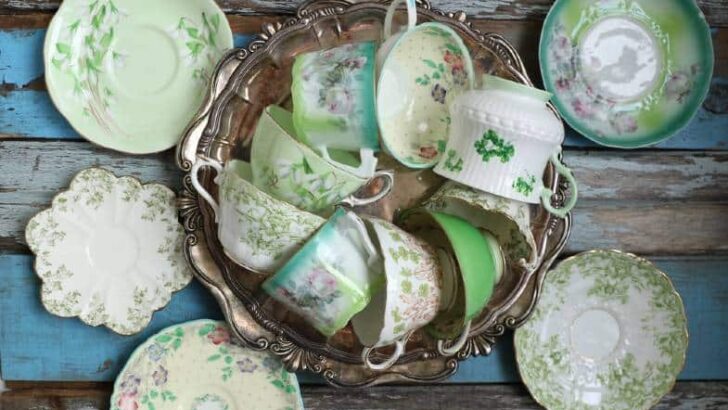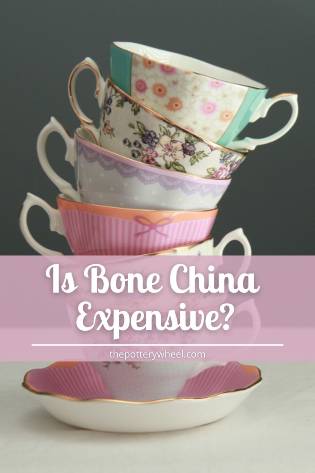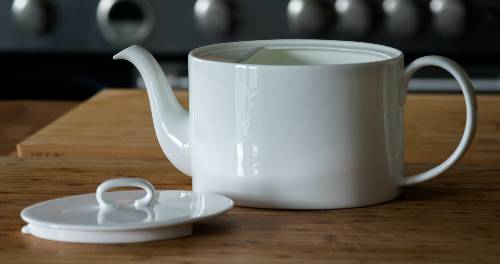Your cart is currently empty!
Is Bone China Expensive? – The Price of Ceramic Beauty
Published:
Last Updated:

Affiliate Disclaimer
As an affiliate, we may earn a commission from qualifying purchases. We get commissions for purchases made through links on this website from Amazon and other third parties.
Porcelains range drastically in terms of quality, design, manufacturing process, and price. One type of porcelain that is very popular is bone china. It is the most elegant and opulent dinnerware material, with a dazzling white color, high transparency, and robustness. It brings high-end classical and contemporary style to any table. But, with its reputation for elegance, is bone china expensive?
Bone china retains its luxury status and high price because its raw materials are very costly, and the production is labor-intensive. In addition, manufacturing involves high kiln temperatures, which causes many failures. Hence, making the process expensive.

Why is Bone China So Pricey?
Bone china is pricier than other porcelains. Unlike other china, it mainly contains bone ash, which gives it an off-white hue, which is more expensive. However, not all bone china is made equal. The amount of bone in the combination determines the quality of bone china. Hence, the more the bone ash content, the pricier the bone chinaware.
Furthermore, the crafting process is labor-intensive. Its ingredients must be artificially mixed, thus expensive since most raw materials cannot be used unless their contaminants, which make them unsuitable for bone china, are removed.
Authentic bone china is distinct from other types of porcelain due to its translucency quality. Translucency implies two firings, high kiln temperature, and inclination to warping.
Hence, the firing process is costly. Not just because of the high temperatures required but also because the kiln’s heat causes many more slumping and dunting failures. Thus, the higher the temperature and many failures, the higher the cost.
In addition, well-known manufacturers developed their reputations on design and quality, a legacy that has been carried on to the current date. They embellish their works with enamels, back stamps, and marks. The printing materials required in markings during the manufacturing process also contribute to the high cost.
Which Is The Most Expensive Bone China?
The most expensive piece of bone china is commonly known as Joseon Baekje. The costliest Joseon object ever sold was a whiteware vase painted in cobalt blue. It was sold at $4.2 million US.
An antique piece of bone china may be more valuable than modern tableware, especially if it is a rare piece from a well-known producer. However, because current producers employ hues like teal, lime green, and even purple to paint their china, modern pieces are less valuable than earlier, more conventional designs.
Tip: The price of both antique and modern chinas depends on the condition of the piece. Pieces with no chips, cracks, stains, or other damage will be significantly more valuable than items with wear or damage.
Is Bone China Worth the Money?
While bone china is considered a luxury item, many people believe it is still worthwhile to invest in since it is both valuable and durable.
Investing in bone china tableware has several advantages for your at-home table setting experience. It adds a sense of elegance and refined taste to home eating, making every day a memorable occasion.
Due to its durability can survive for decades and may have incredible sentimental value when passed down through generations. Moreover, the older a bone china piece gets, the pricier it gets.
Because bone china is very robust, it is likely to withstand everyday usage and the regular accidental slips of the hand or knocks from the table. Nonetheless, extra care must be observed when washing and should be stored in a secure location.
How Do You Know If Bone China Is Valuable?
The condition of bone china and its age and rarity in the market are the key determinants of its value. The older, rarer, and more well-preserved a bone china piece is, the more valuable it is.
However, before determining the worth of tableware, bone china must first be distinguished from other porcelains. Holding a piece above a bright light is a simple trick for identifying real bone chinaware.
The light should be able to travel through it. The color of the bone china will also help in identifying the valuable tableware. According to Noritake, the color of bone china is more ivory than white.

Back stamps and manufacturer’s markings help in determining if bone china is valuable. Therefore, when assessing its worth, first check on the brand of the bone china. Well-known, centuries-old producers like Spode and Wedgewood have built their names on quality and design.
To identify the manufacturer, one should check for markings on the dinnerware, as they provide information on the date of manufacture, the manufacturer, and the place of production.
The place where bone china was manufactured contributes to the worth of bone china. For example, the most valuable bone china originates from England, where the method of using bone ash into porcelain mixes was developed in competition with China’s unknown porcelain formula.
Chinaware collectors, appraisers, and auctioneers also assist in determining the worth of bone china. They check on bone china’s unique characteristics such as elegance, transparency, and softness, then estimate its current price.
Is Bone China the Most Expensive China?
On average, bone china pieces cost more than all other porcelains. However, this does not imply that it is the most expensive china. Collectible Fine China pieces are the most costly, with some selling for millions of dollars. For instance, the most expensive fine china piece ever sold (an 18th century Qing Dynasty Fine China vase) was auctioned for $84 million.
The reason why some fine china pieces are pricier than bone china is that they were introduced earlier. Fine China was introduced in BC 11. Bone China, on the other hand, dates back to the 1800s. As such, there are plenty of antique fine china pieces that collectors wish to get their hands on.
Final Thoughts
Bone china is often costly and elegant. It is deemed luxurious tableware with a tremendous status, so it is utilized on special occasions. Also, in particular families, it acts as an inheritance passed down through generations.
Well-preserved antique bone china is precious. For instance, an antique piece of bone china can even be worth hundreds of dollars, especially if it is in good condition.
The attractive crafted design and durability of bone china products are unrivaled. While bone china might appear fragile due to its weight and thickness, it is one of the sturdiest porcelains available in the market. Its appearance and durability make it ideal for both everyday usage and special events. Therefore, it is worthwhile investing in it.



